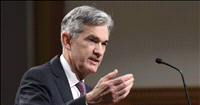Government focus on upgrading mobile tower network
21 Mar 2009
The Universal Service Obligation Fund, a conglomeration of mobile phone service providers, will spend Rs5,000 crore to ensure cellular connectivity in rural areas across the country, Ajay Bhattacharya, administrator of the USOF, has said.
Speaking to the media after the launch of the 'Ericsson tower tube', an innovation in mobile phone towers introduced by Ericcson India in Bangalore on Thursday, Bhattacharya said the USOF had set up 7,800 towers for the spread of the cellular network.
The USOF is largely funded by telecommunication companies, which contribute five per cent of their income to the body annually. ''We will be starting the second phase with an aim to link every habitation having over 500 people soon,'' Bhattacharya said.
The country would need a minimum of one lakh towers to increase teledensity in rural areas, he said, adding that at present the rural density is 13 per cent, against 75 per cent for urban areas.
The USOF has a fund availability of Rs 14,000 crore, which is geared to increasing the teledensity, Bhattacharya said. ''However, there are some issues on the amount of funding which are being discussed with the finance ministry,'' he added.
New tower system
P Balaji, vice-president (marketing & strategy), Ericsson India, said the tower tube developed by his company is eco-friendly and cost-effective, and fully encapsulates house base stations.
Tower Tube replaces conventional cell sites with an innovative tubular construction that houses base stations and antennas, fully encapsulating them in an aesthetic, energy-efficient and low environmental impact tower, which is a self-contained site. It safely houses all equipment within its slim design (about 5m in diameter), reducing the need for more land.
Radio base stations (RBS) are enclosed within the tower. They are initially installed at the bottom of the tower and then raised to the top by an elevator. By positioning a RBS at height, there is very low feeder loss, which allows improved network coverage and capacity
Unveiling a prototype of the tower fabricated at the company's site at Ibrahimpatnam near Bangalore, Balaji claimed that the cost of the tower would be over 40 per cent less than in existing towers.
''It only needs one-tenth 10th of the steel required by existing towers and consumes only 40 per cent of the power now being used,'' he said. The towers do not require feeders and cooling systems, resulting in lower power consumption. Power forms the biggest operating cost for the towers. Diesel generators lead to fuel costs as high as Rs25,000 per month in rural areas.
The tower tube also makes site acquisitions easier, as it requires less space than conventional towers. This would reduce operational expenses for operators and also bring down the total cost of ownership, which ranges between Rs17 lakh to Rs35 lakh per tower, depending on whether a tower is roof-based or ground-based, explained Balaji.
India is adding over 10 million wireless subscribers each month and operators have aggressive targets for setting up towers. According to the Telephone Regulatory Authority of India, the industry requires three lakh towers by fiscal 2011, and the number could grow exponentially if the wireless subscriber numbers grow at a faster pace than predicted.























